Uglich kremlin: Bright beacon on the Volga River
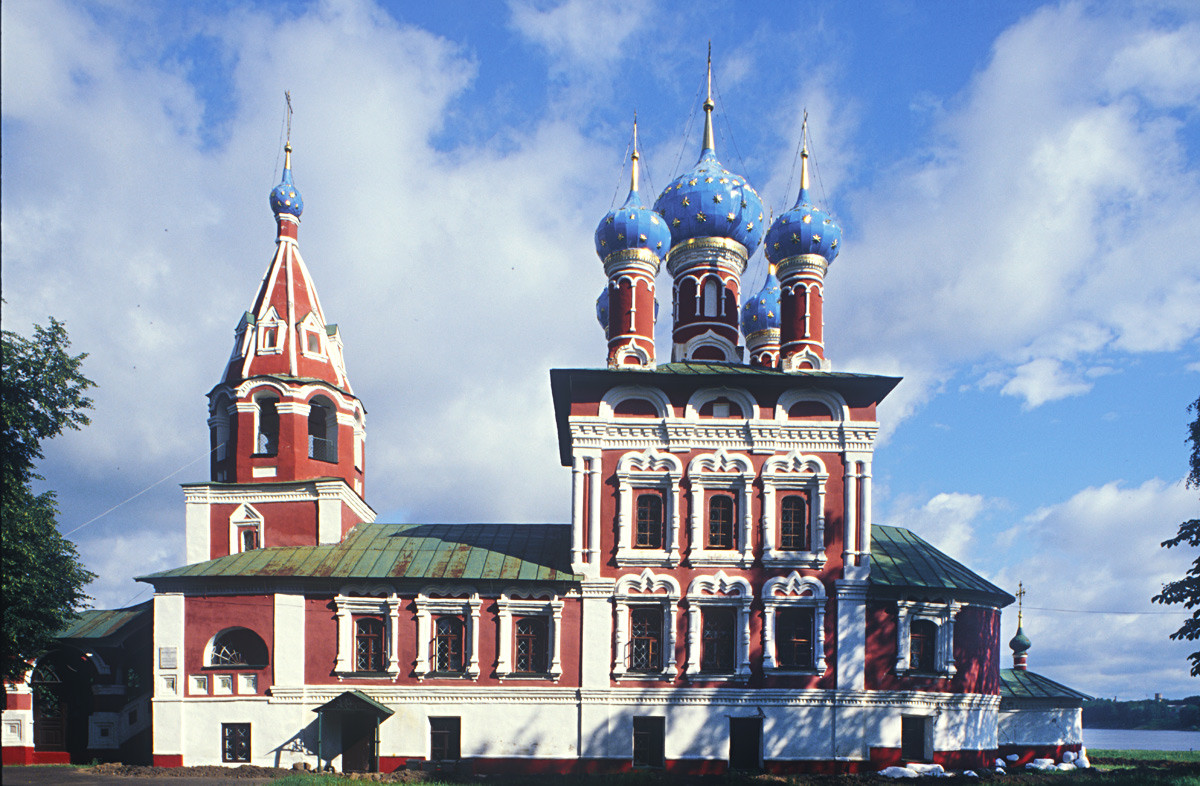
Uglich. Church of St. Tsarevich Dmitry "on the Blood". South view. July 16, 2007.
William BrumfieldAt the beginning of the 20th
Logistical support for Prokudin-Gorsky’s project came from the Ministry of Transportation, which facilitated his photography on Russia’s waterways and expanding rail network. His trips along the Volga River in 1910 and 1911 proved especially productive
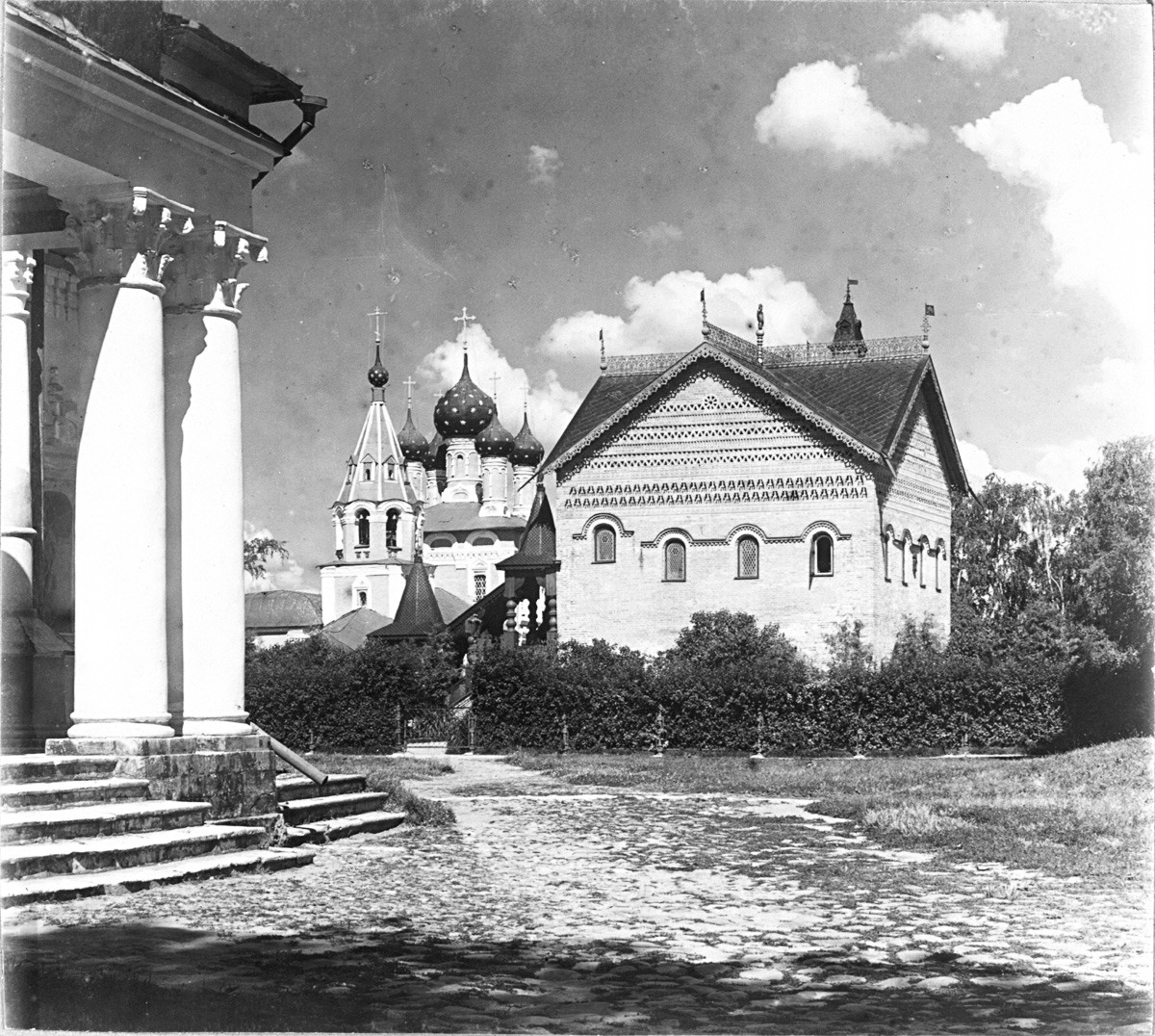
Palace (Chambers) of Uglich Princes, west view. Left: Church of Tsarevich Dmitry. Late summer 1910.
Sergei Prokudin-GorskyHowever, Prokudin-Gorsky made contact prints from the magenta segment of his 3-exposure glass negatives, and the Uglich monochrome prints proved to be of excellent quality. My own visits to the town occurred over a two-decade span from 1987 to 2007

Palace (Chambers) of Uglich Princes, southwest view. July 30, 1997.
William BrumfieldAn ancient, but modest town
There is no verifiable date for the founding of Uglich, but archeological evidence suggests that it existed by the middle of the tenth century. Its location at a bend in the Volga is considered to have provided the name, derived from the Russian ugol, or angle
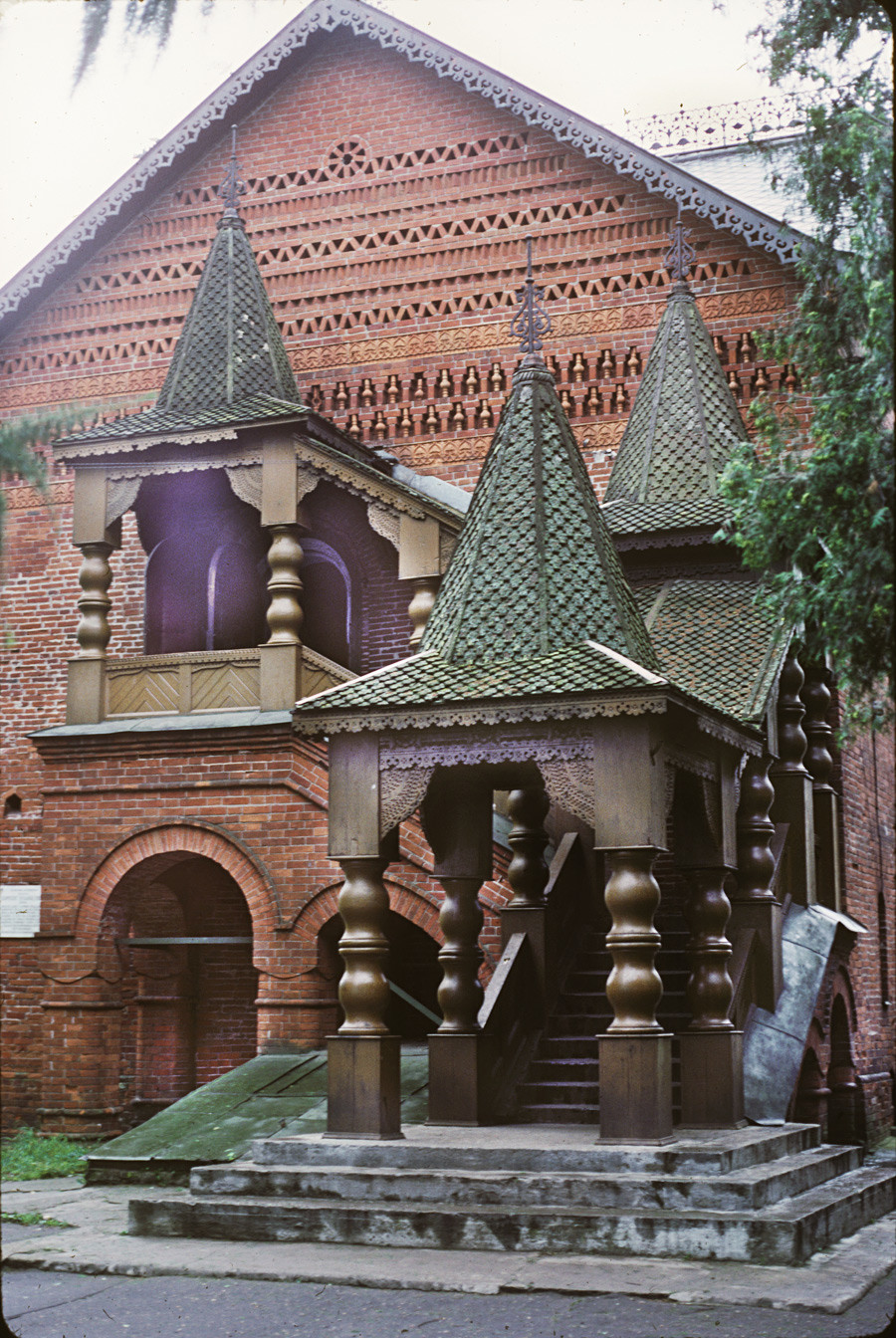
Palace (Chambers) of Uglich Princes. North view with stairway created by N. Sultanov. August 9, 1987.
William BrumfieldA modest structure by European standards, the brick palace (
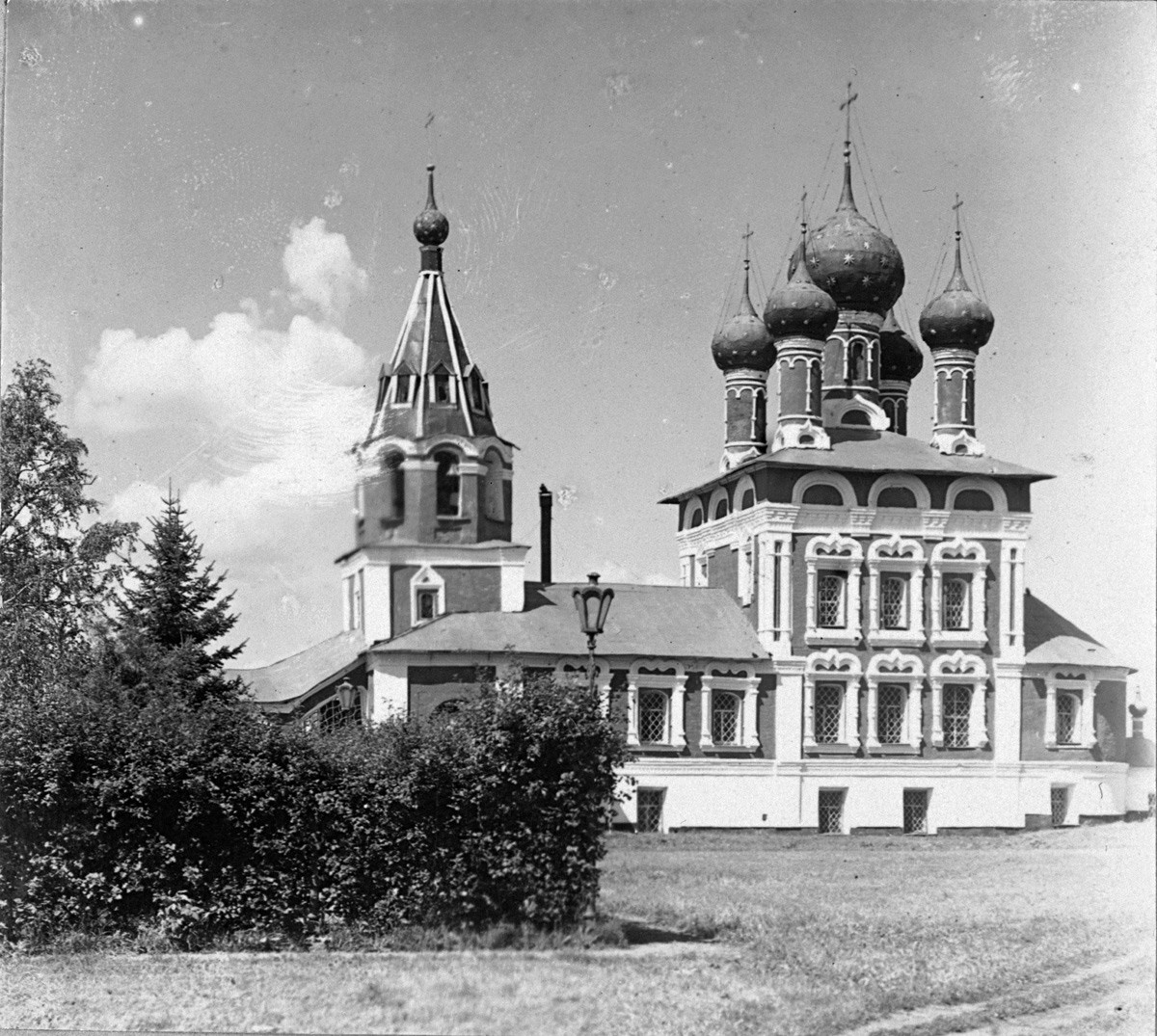
Church of Tsarevich Dmitry "on the Blood". South view. Late summer 1910.
Sergei Prokudin-GorskyA dramatic history
As the tercentenary of the death of Tsarevich Dmitry approached in 1891, funds were allocated to undertake a major renovation directed by the Petersburg architect Nikolay Sultanov, a leading proponent of the late 19th-century Russian Revival style. Sultanov imaginatively added embellishments such as the decorative porch and entrance on the north side. Prokudin-Gorsky’s view shows the west side, with the porch only dimly visible. I was able to photograph the structure from both sides
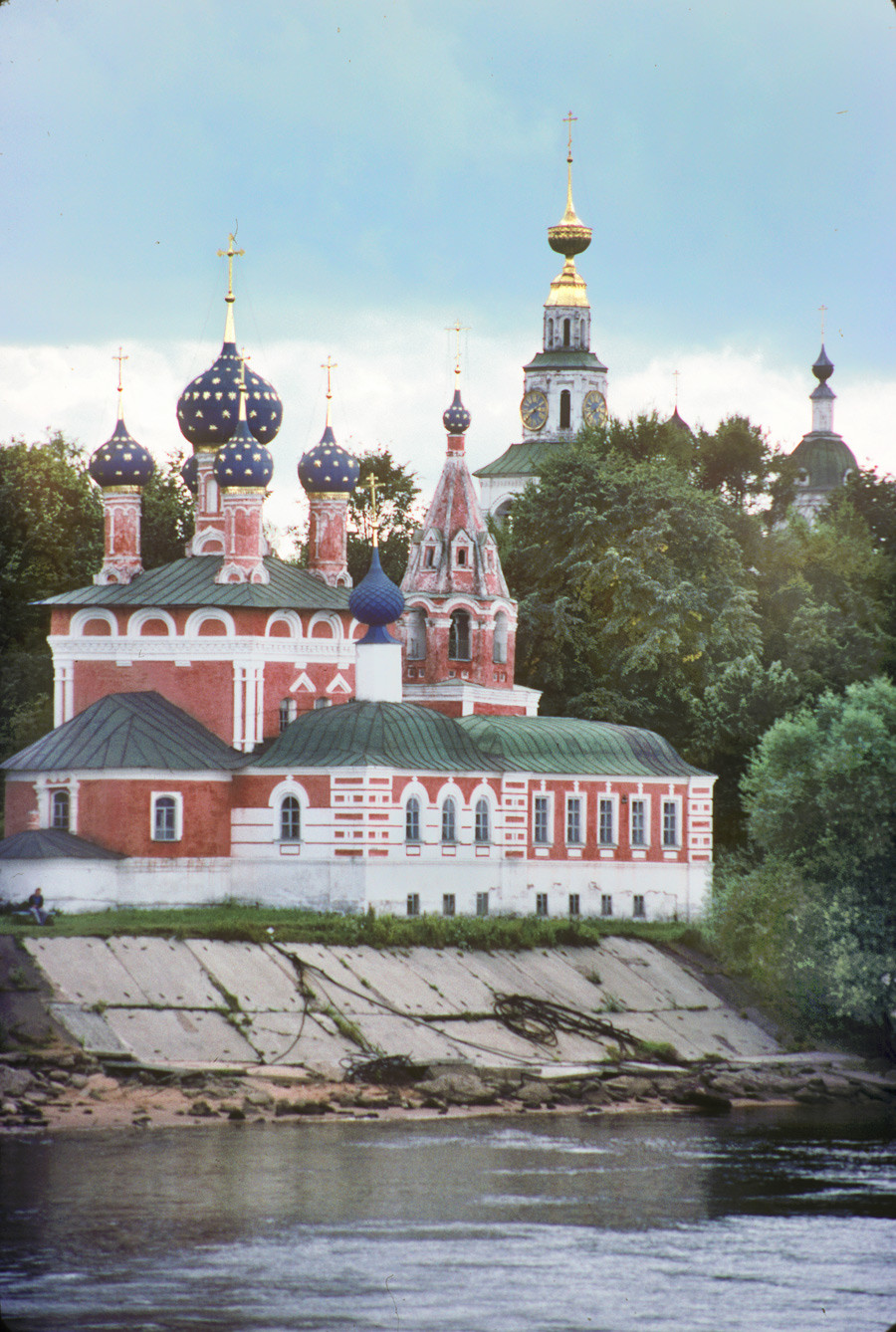
Church of Tsarevich Dmitry "on the Blood". Northeast view from Volga River. Foreground: attached Chapel of Yaroslavl Miracle Workers (1860-61). Background: Cathedral bell tower. August 9, 1991.
William BrumfieldAnother version says that the child was murdered by companions, who were killed by an enraged crowd when they saw his body. This, in turn, gave rise to a popular and enduring legend that considered the tragedy a murder instigated by the cunning Boris Godunov (1551?-1605), who held de facto power in Russia during the final years of the reign of Tsar Feodor (1557-98), the last of the Ryurikovich dynasty. An investigative committee reported that the death was an “accident”; but following the accession of the Romanovs, the death was attributed to Godunov. In the 19th century, certain prominent historians began to question the “anti-Godunov” version
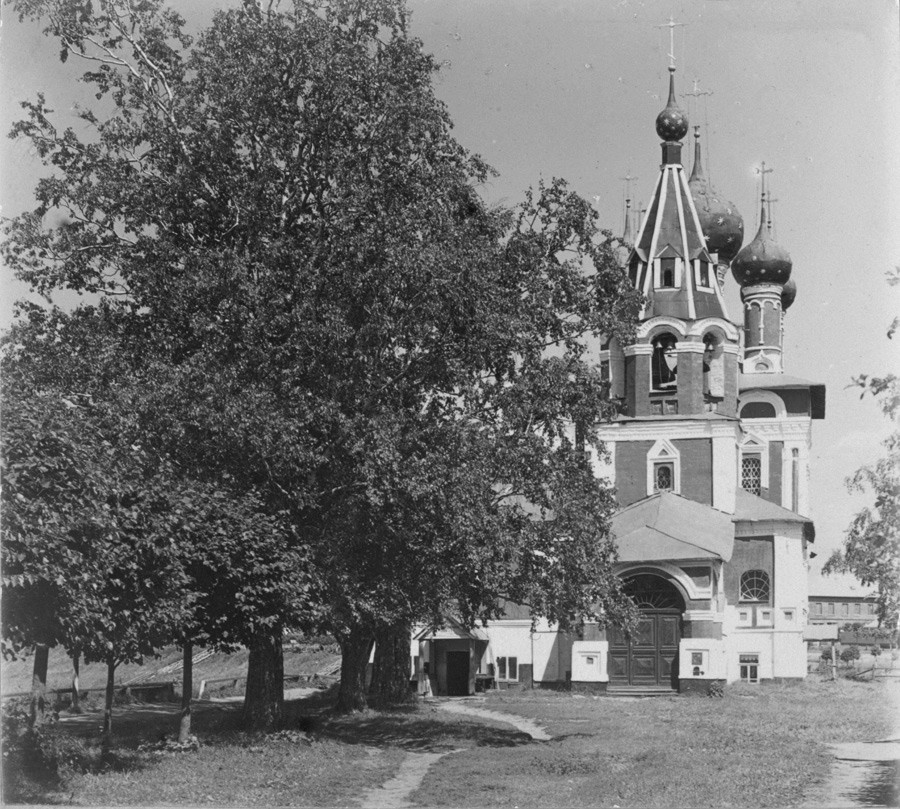
Church of Tsarevich Dmitry. West view with bell tower over main entrance. Late summer 1910.
Sergei Prokudin-GorskyRumors of Godunov’s guilt in the murder of the Tsarevich Dmitry undermined his authority, as did political intrigues and a series of natural disasters that led to the recurring threat of famine. Following his death in 1605 and the murder of his family in the Kremlin, there
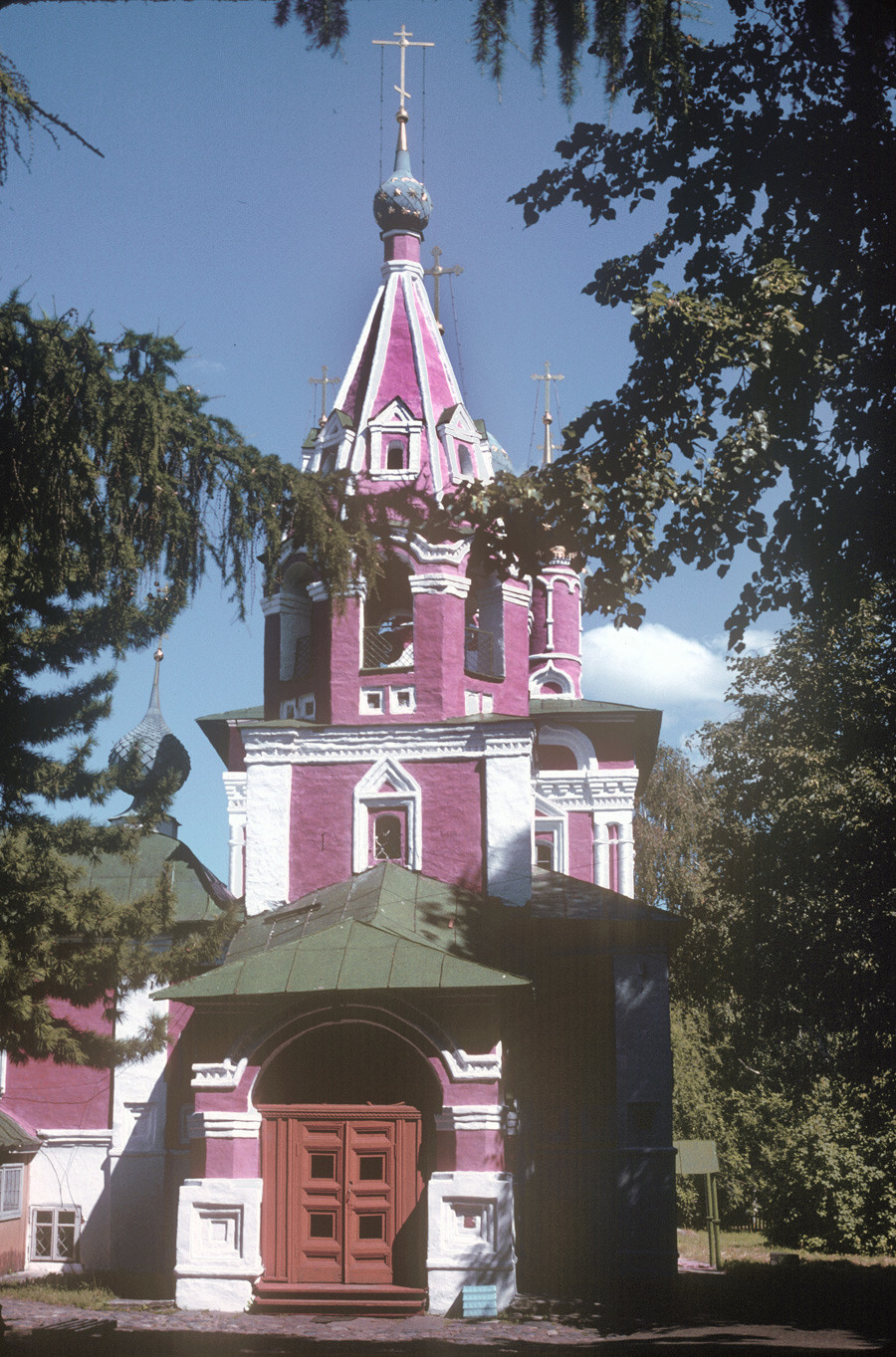
Church of Tsarevich Dmitry. West view with bell tower over main entrance. July 30, 1997.
William BrumfieldPilgrimage site
Because of the traumatic memories associated with the death of the Tsarevich—and the need for healing—Uglich was filled with churches and chapels. By one count there were thirty churches in addition to the churches in three monastic institutions. (Approximately half of these churches were demolished
Primary among them was the Church of Tsarevich Dmitry “on the Blood,” so named because of its location at the site of the child’s violent death. In 1606, the year of Dmitry’s canonization,

Church of Tsarevich Dmitry. Ceramic tile, south facade. August 9, 1987.
William BrumfieldAs the centennial of Dmitry’s death approached, work began on a brick church with the patronage of the young
Consecrated in 1692, the church design followed a traditional 17th-century form, with a bell tower
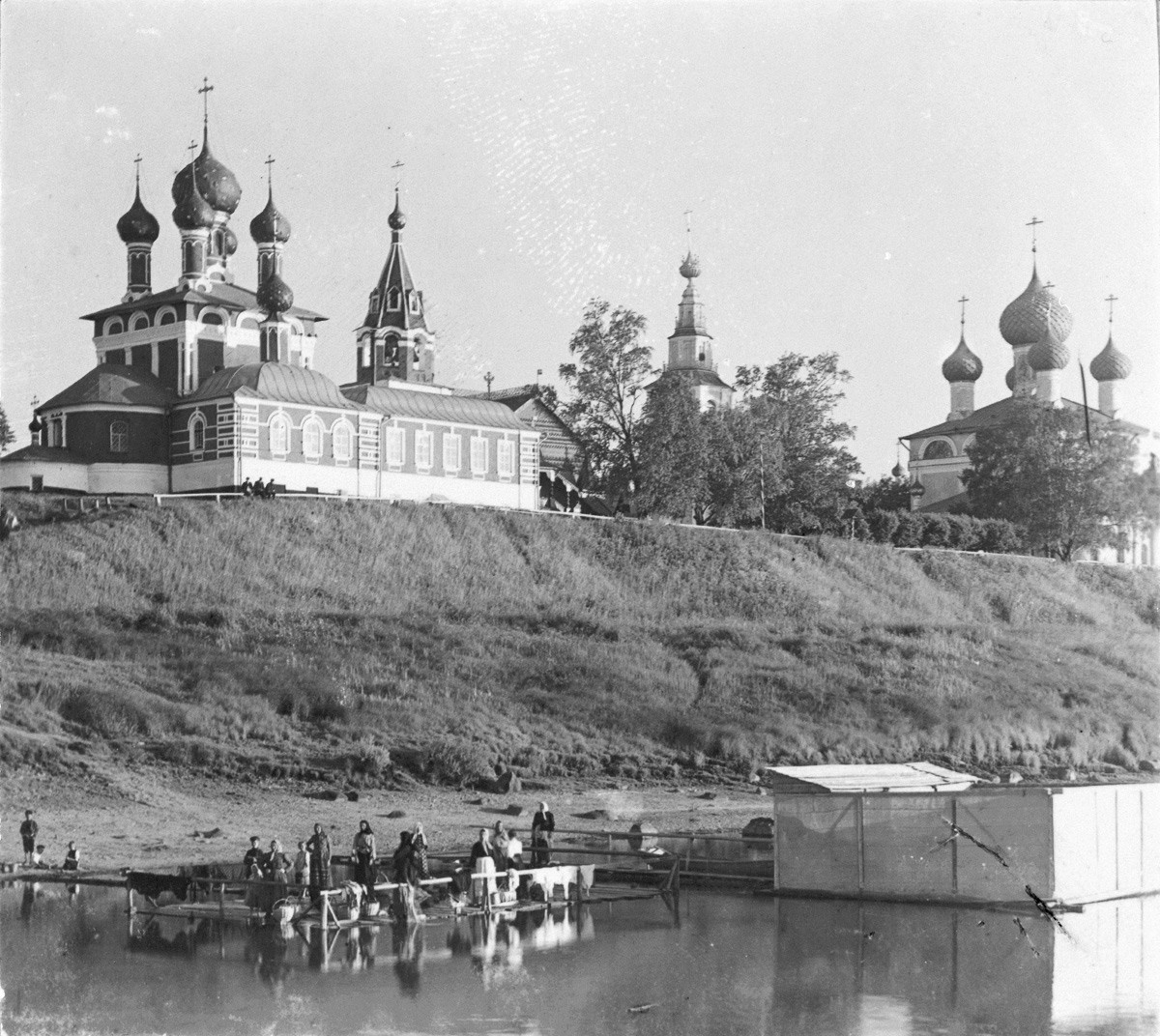
Church of Tsarevich Dmitry. Northeast view from Volga River. Foreground: washing clothes in Volga River. Right: Transfiguration Cathedral. Late summer 1910.
Sergei Prokudin-GorskyProkudin-Gorsky photographed the monument from all sides, as did I. His northeast view is remarkable not only for the image of the church above the
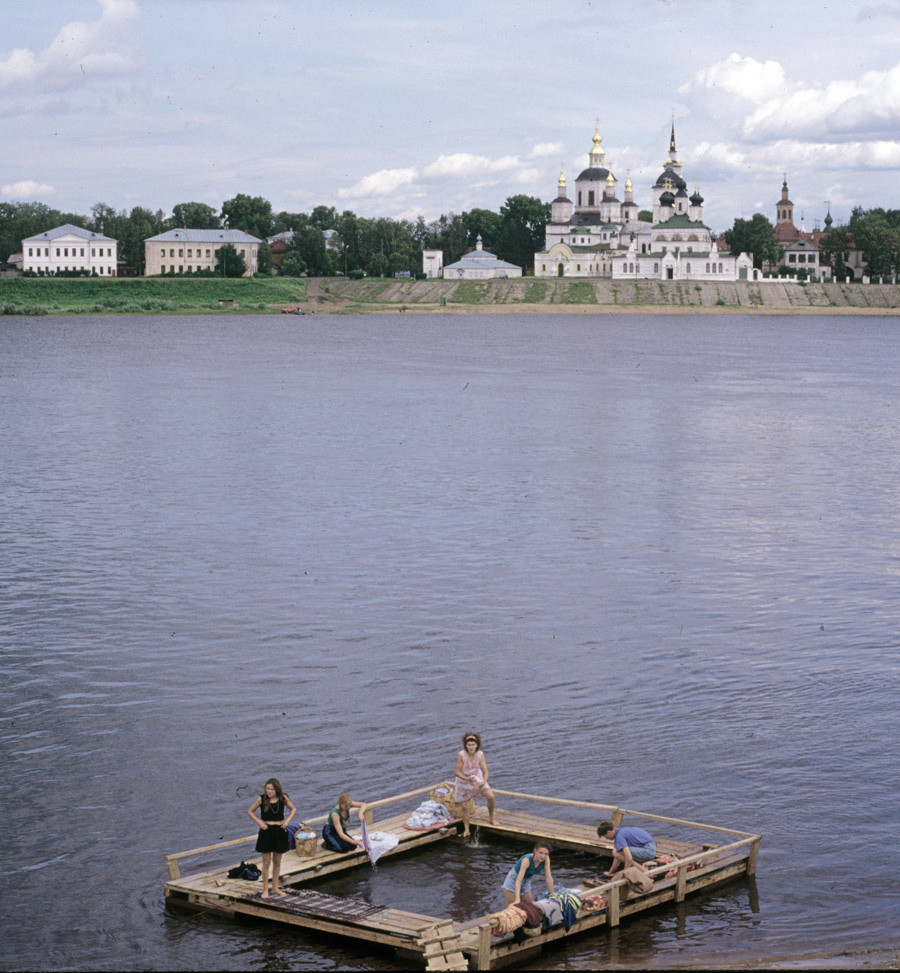
Veliky Ustyug. Washing clothes in Sukhona River. Background: Dormition Cathedral ensemble. July 23, 1998.
William BrumfieldAlthough arguments continue about the circumstances of Dmitry’s death, the Church of Tsarevich Dmitry has transcended these quarrels to become the main historic site of Uglich. Visited each year by thousands of pilgrims and tourists, the church stands above the Volga as a vibrant example of Russian art.
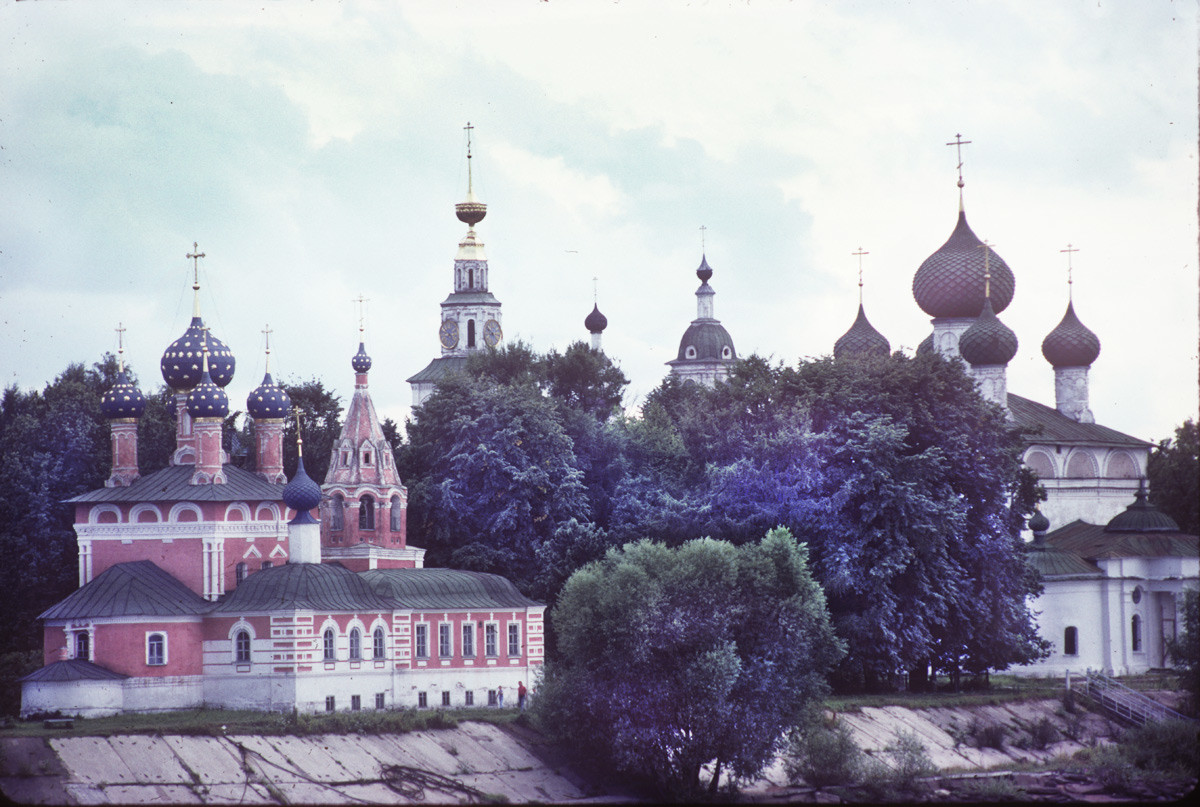
Uglich kremlin ensemble, northeast view from Volga River. From left: Church of Tsarevich Dmitry; Cathedral bell tower; Church of Kazan Icon, Transfiguration August 9, 1991.
William BrumfieldIn the early 20th century the Russian photographer Sergei Prokudin-Gorsky devised a complex process for color photography. Between 1903 and 1916 he traveled through the Russian Empire and took over 2,000 photographs with the process, which involved three exposures on a glass plate. In August 1918, he left Russia and ultimately resettled in France with a large part of his collection of glass negatives. After his death in Paris in 1944, his heirs sold the collection to the Library of Congress. In the early 21st century the Library digitized the Prokudin-Gorsky Collection and made it freely available to the global public. A number of Russian websites now have versions of the collection. In 1986 the architectural historian and photographer William Brumfield organized the first exhibit of Prokudin-Gorsky photographs at the Library of Congress. Over a period of work in Russia beginning in 1970, Brumfield has photographed most of the sites visited by Prokudin-Gorsky. This series of articles will juxtapose Prokudin-Gorsky’s views of architectural monuments with photographs taken by Brumfield decades later.
If using any of Russia Beyond's content, partly or in full, always provide an active hyperlink to the original material.
Subscribe
to our newsletter!
Get the week's best stories straight to your inbox